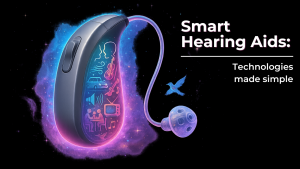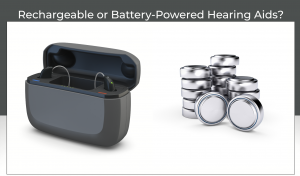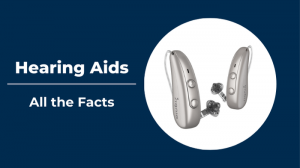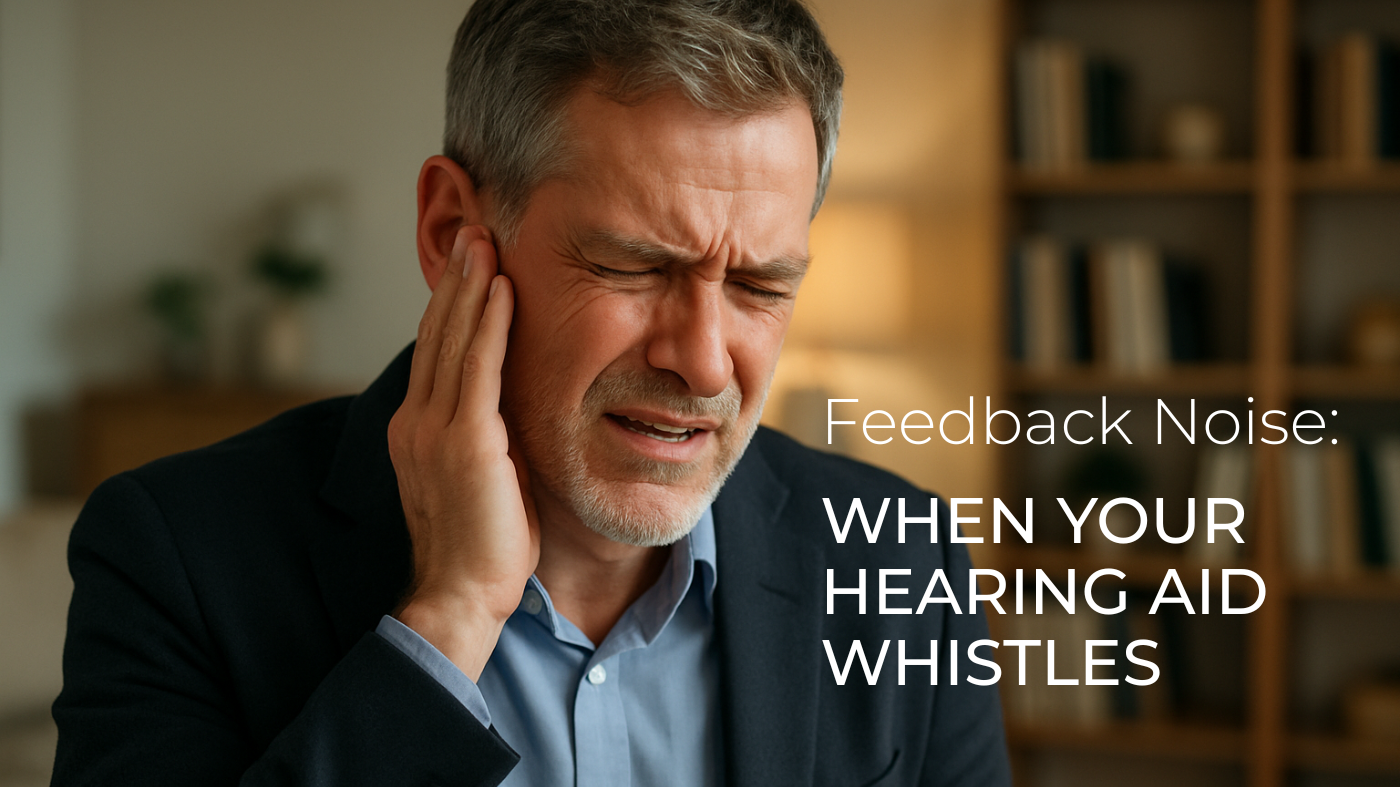
Hearing Aid Feedback noise – when your Hearing Aid whistles: Causes, Solutions, and Expert Tips for 2025
Have you ever noticed your hearing aid suddenly making an unpleasant whistling or beeping sound? This ist hearing aid feedback. Maybe you heard it yourself, or someone around you pointed it out when the sound became more noticeable. This phenomenon is called feedback – and it can be more than just annoying; it can seriously impact your hearing experience.
But don’t worry. In most cases, feedback can be resolved quickly with a few simple adjustments. We’ll walk you through the most common causes and explain what you or your hearing care professional can do to fix it:
Table of contents
What is hearing aid feedback – and how does it affect everyday life?
Hearing aid feedback can be disruptive and have a noticeable impact on daily life. The loud whistling can interfere with conversations, making communication harder and making the wearer feel self-conscious. It’s especially noticeable in quiet environments, where it may lead to awkward situations. Feedback can also undermine trust in the device, causing users to wear it less often – which in turn reduces overall quality of life and speech understanding.
How does hearing aid feedback occur?
Feedback happens when amplified sound from the hearing aid unintentionally loops back into the microphone and gets amplified again. This feedback loop produces a high-pitched whistling or beeping sound that’s clearly audible to both the wearer and people nearby.
Common causes of hearing aid feedback:
- Poor hearing aid fit → Amplified sound escapes and re-enters the microphone.
- Earwax buildup → Sound bounces off the wax and back into the microphone.
- Technical or mechanical issues → Malfunctions or vibrations within the device can also trigger feedback.
Causes & solutions in detail
1. Feedback due to poor hearing aid fit
A properly fitting hearing aid is essential for good sound quality. If the device doesn’t sit correctly in the ear, amplified sound can leak out and be picked up again by the microphone, causing feedback. This is especially common when the earpiece doesn’t match the unique shape of the ear canal or has changed over time. Incorrect insertion of the hearing aid can also lead to feedback.
Typical causes:
- Earmold or earpiece no longer fits properly
- Hearing aid isn’t inserted correctly
- Changes in ear canal shape due to age or weight fluctuations
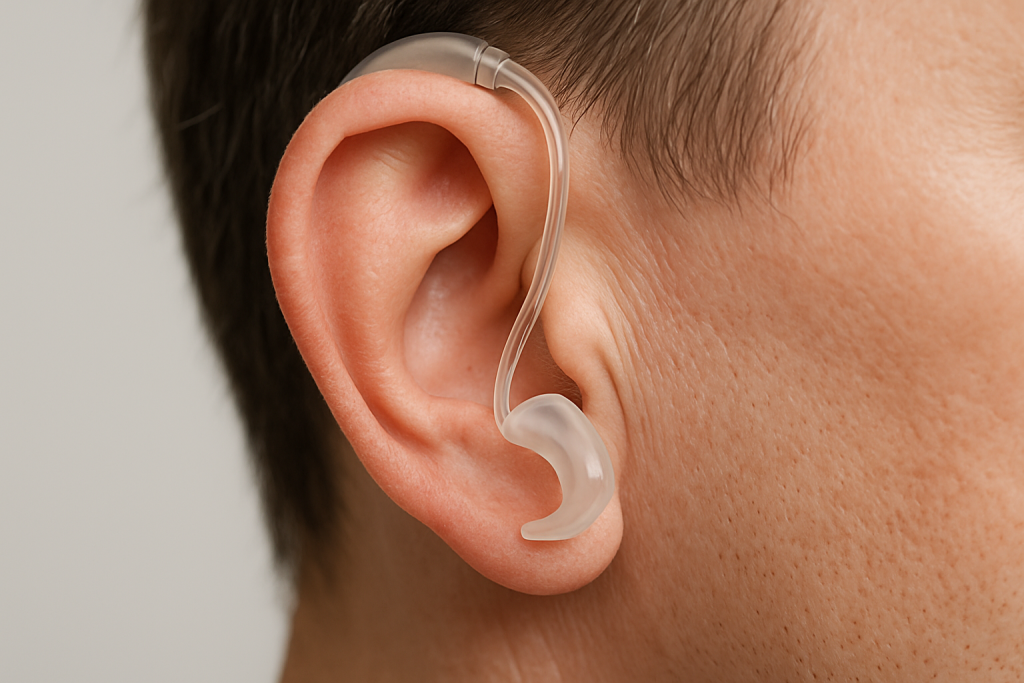
Possible solutions:
👉 Insert the hearing aid correctly: Ask your hearing care provider to show you the right way.
👉 Get a custom earmold: A tailored fit can reduce sound leakage.
👉 Try different domes: For RIC devices, switching to a larger or better-fitting dome can help.
👉 Regular fit checks: The shape of the ear can change, so regular adjustments are important.
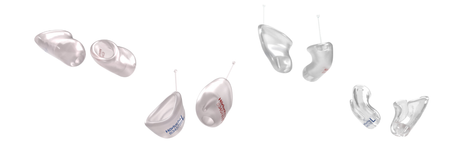
There are numerous types of individual earmolds.
2. Hearing aid feedback due to earwax
Earwax plays a vital role in protecting the ear canal, but too much of it can cause problems. Excess wax can reflect sound back into the hearing aid’s microphone, triggering feedback and reducing sound quality. Hearing aid users may also notice increased wax production, as the device affects the ear’s natural self-cleaning process.
Possible solutions:
👉 Practice regular ear hygiene: Clean your ears with a damp cloth or use special sprays.
👉 Get professional cleanings: Visit an ENT doctor or hearing specialist for earwax removal.
👉 See a doctor: If wax builds up frequently, medical advice may be needed.
3. Feedback caused by technical or mechanical issues
Modern hearing aids are highly advanced but also delicate electronic devices. Wear and tear or faulty components can lead to unwanted whistling sounds. For example, damaged microphone or speaker mounts or loose wiring can trigger feedback. Mechanical vibrations inside the device or software malfunctions may also interfere with its performance. Regular maintenance and professional check-ups can help identify and resolve such issues early on.
Typical causes:
- Worn-out or defective components such as microphones or speakers, especially their mounting
- Mechanical vibrations inside the device
- Amplification issues or software errors
Possible solutions:
👉 Check the device for damage: Have a hearing care professional inspect parts like the microphones, speakers, and casing.
👉 Update the software: In some cases, feedback can be resolved with a simple calibration or adjustment to the amplification.
👉 Professional repair: If mechanical faults are present, the device should be serviced by a specialist.
👉 Consider a new hearing aid: Modern devices offer improved feedback suppression and better vibration control.
Optimization options with your hearing care provider
Your hearing care provider has the expertise to effectively minimize feedback. In addition to identifying the exact causes, they can take several steps to improve fit and adjust technical settings. Selecting the right earmolds, fine-tuning venting, or making targeted software adjustments can often significantly reduce feedback. Regular check-ups also help detect issues early and ensure long-term performance.
- Improving in-ear fit: Custom earmolds ensure a snug fit and prevent sound leakage.
- Adjusting vent size: Reducing or modifying the vent opening can help minimize feedback.
- Changing earpieces: Switching to closed domes or soft silicone earmolds can make a difference.
- Technical inspection of the device: Microphones, speakers, and casings should be checked for defects or leaks.
- Adjusting amplification: A feedback measurement identifies problem frequency ranges so the device can be optimized accordingly.

Conclusion: A whistle-free hearing aid for the best sound experience
Hearing aid feedback can be annoying, but it’s usually easy to fix. Whether it’s due to poor fit, earwax buildup, or technical issues – the solution is often just a small adjustment away. With regular check-ups by your hearing care provider, good ear hygiene, and properly configured device settings, you can minimize unwanted noise and enjoy clear, uninterrupted hearing.
If you’re still experiencing whistling sounds, don’t hesitate to seek professional support – for the best possible hearing experience without distractions.
About the author
Alle Hörgeräte mit Bluetooth auf einen Blick:
Weitere interessante Artikel zu Hörgeräte-Technik
- Smart Hearing Aids: The Technologies That Define Modern Devices in 2025

- Rechargeable vs Battery Hearing Aids: 6 Key Factors to Help You Decide

- Bluetooth Hearing Aids 2025: How Smart Hearing Aids Enhance Your Listening Experience

- Bluetooth Hearing Aids: What’s New in 2025

- Hearing Aids 2025: Everything You Need to Know

- Starkey Edge AI Hearing Aids – Innovative, Powerful, and Energy-Efficient in 2024

Bildquelle: Gerd Altmann auf Pixabay


